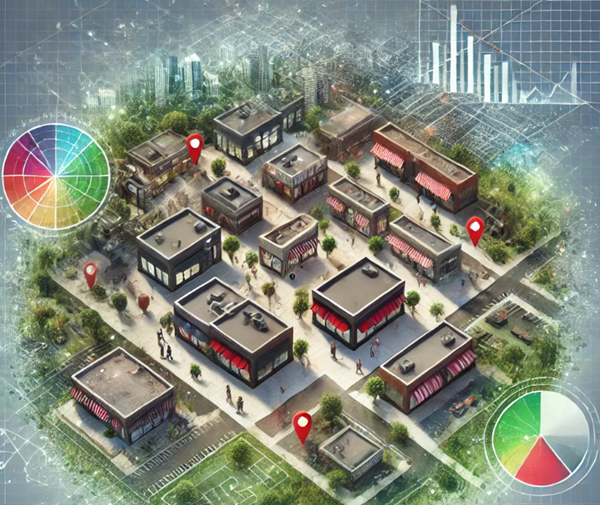Retail Expansion: Using Location Intelligence to Choose New Store Locations

Choosing the right location for a new retail store is not just about finding an available space; it's about ensuring that the location aligns with strategic business goals and market needs. With advancements in location intelligence, retailers can now make data-driven decisions that maximise their chances of success in new markets. Here’s how location intelligence is transforming the process of selecting new store locations.
Understanding the Market Demographics
The first step in choosing a new retail location is understanding who your customers are and what they need. Location intelligence tools provide detailed demographic data that can help identify areas with a high concentration of your target audience. For example, if your retail brand targets young professionals, you might look for locations in urban areas with a high percentage of this demographic. Detailed data on factors like age breakdown, income levels, and education can help pinpoint where these potential customers live, work, and shop.
Evaluating Local Competition and Market Saturation
Before settling on a new location, it’s crucial to assess the competitive landscape. Location intelligence allows retailers to map out existing competitors, providing a clear view of market saturation. Tools that offer insights into the types and success of nearby businesses can help determine if the market is ripe for more of the same kind of store or if a different retail approach might stand out. For example, if there are several coffee shops in an area, a new cafe might face tough competition unless it offers a unique selling proposition.
Proximity to Complementary Businesses
The strategic placement of a store near complementary businesses can boost foot traffic and sales. Location intelligence helps identify areas where complementary businesses are located. For instance, a sportswear store opening near fitness centres and health food shops can attract more targeted customers. Understanding the landscape of local businesses can be crucial in formulating a co-location strategy that aligns with consumer lifestyles and shopping habits.
Long-term Economic and Development Trends
Finally, the economic stability and growth potential of an area cannot be overlooked. Location intelligence tools that tap into property data, economic trends, and planned developments can provide valuable foresight. Retailers might favour locations in up-and-coming areas where future developments are likely to increase property values and customer bases. Insights into local economic health, including new building projects and infrastructure developments, can signal promising areas for long-term success.
Choosing the right location for a new retail store is a complex decision that requires more than gut feeling. By leveraging location intelligence, retailers can base their decisions on a solid foundation of data-driven insights. From understanding who your customers are to anticipating future trends, location intelligence equips retailers with the tools to expand confidently into new markets.
Visit Smart Location Analysis to explore how our cutting-edge location intelligence solutions can help you pinpoint the perfect new location for your retail expansion.